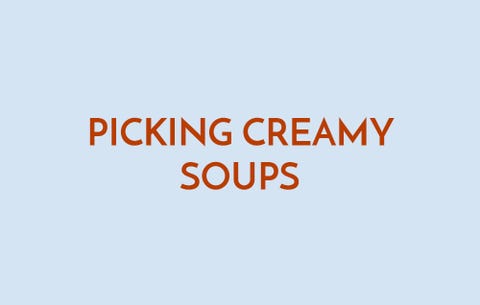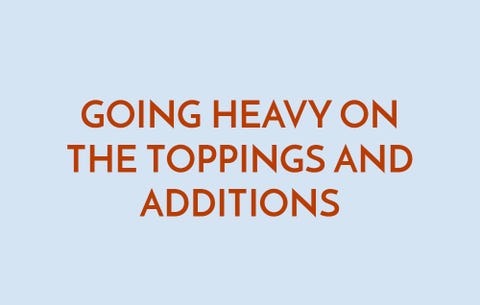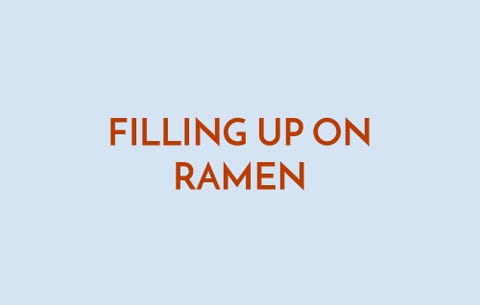Is Chicken Soub Without Fat a Good Diet Food
Slurping down a bowl of soup is a quick, easy way to warm up on a chilly fall day. And, fortunately for those looking to lose weight, the fall comfort food can also be a great way to help you reach your goals long before the New Year.
For example, in oneAppetitestudy, men and women who ate a bowl of low-calorie vegetable soup 15 minutes before their entree ended up eating 20 percent fewer calories total compared to those who didn't start their meal with soup. Researchers suggest that soup can increase feelings of fullness and slow digestion, especially when it's loaded with protein and fiber. (Learn how bone broth can help you lose weight with Women's Health's Bone Broth Diet.)
According to Georgie Fear, R.D., a Canada-based registered dietitian and author ofLean Habits for Lifelong Weight Loss, soups are great for satiety because they're low in caloric density. In other words, you get more food in your stomach for fewer calories, as opposed to calorie-dense foods such as pizza and pasta, which often afford you a pitifully small portion size for the same amount of calories as a heaping bowl of soup.
Trouble is, when it comes to weight loss and weight maintenance, not all soups qualify as healthy, says Fear. Some soups supply you with crazy amounts of calories and fat, while others offer too little, which can skyrocket hunger and cravings later in the day—and wind up sabotaging your weight-loss goals.
It's time to wise up so you can keep your weight-loss efforts on track. Experts dish on the common soup mistakes that can make losing weight harder than it has to be. Plus, the simple swaps to keep your soup game on point.

Christine Frapech
Thick, creamy soups are insanely delicious. (Think: cream of mushroom, broccoli cheddar, and New England clam chowder). Unfortunately, they're also fat and calorie bombs. Even tomato soup, which might look healthy, is often loaded with high-calorie, high-fat cream and butter, says Elana Natker, R.D., a registered dietitian based Washington, D.C.
To keep your weight in check, avoid soups labeled "creamy" or "cream-of [insert name of vegetable]." Also, look out for soups labeled "bisque," which is really a code word for fat, says Fear. Sometimes, however, creamy soups can be disguised under healthy-sounding names. When in doubt, check the nutrition label for cream. Opt for broth-based soups, such as minestrone and vegetable medley, whenever possible.
If you're hooked on creamy soups, though, you can easily make your own "cream of" soup by swapping out the cream and butter with an equal amount of whole or low-fat milk, Fear says. The simple subsitution will save you roughly 50 to 100 calories per serving without skimping on flavor.
To make your own "cream of" soup, try blending three-quarters cup of a frozen vegetable of choice (thawed), one-half cup nonfat milk, and one-quarter cup shredded reduced-fat cheddar cheese. Then add a sprinkle of dried onion, dried garlic, and salt. Heat the mixture on the stovetop for a quick, healthy meal that's ready in five minutes, recommends Natker.
Try this delicious creamy tomato soup without all the fat and sodium:

Christine Frapech
At the other end of the caloric spectrum, many popular canned and boxed soups contain a measly 80 to 100 calories per cup. While these low-cal soups may sound like a dieter's dream, they can end up sabotaging your weight-loss efforts by leaving you with little to no stomach-satisfying protein, fiber, or fat (yes, some fat is good!). Eat one of these low-cal soups and chances are you'll be hungry again in an hour, Natker says.
If you're buying canned or boxed soups, check the nutrition facts to see how your choice stacks up. Try to pick a soup that has at least seven grams of protein per serving. If it's low in the protein department, you can beef it up by mixing in some tofu, cooked chicken breast, or egg (poached or hardboiled).
When it comes to reduced-fat soups, the key is to make sure that it still hits the spot. So, if reduced-fat versions succeed in filling you up and tickling your tastebuds, go for it. "If they feel watery or flavorless, though, it's better to have what you want, and just less of it, than a big bowl of disappointment," Natker says. Otherwise, you may end up reaching for an unhealthy snack later in order to get the satisfaction you were looking for.
Related: 9 Soups To Make If You're Trying To Lose Weight

Christine Frapech
Often times, the soup itself is perfect; rather, it's the unhealthy toppings and additions that sabotage your weight-loss efforts.
For example, French onion soup is great for dieters. That is, "until you add the thick layer of cheese and toast," Natker says. If you're ordering at a restaurant, find out if you can omit these toppings. Similarly, chicken soup is a great option if weight control or loss is your goal… unless you mop it up with a sleeve's-worth of saltine crackers. Meanwhile, one bowl of turkey chili at Panera Bread packs a modest 260 calories, 32 grams of carbs, and 17 grams of protein. But if you turn it into a bread bowl, the calories skyrocket to 840 and the carbs to 151 grams, while the protein drops to 11 grams.
Do yourself a favor and skip the bread bowl. Likewise, go easy on the crackers. If you need some crunch, Natker recommends a whole-grain option such as Wasa. Meanwhile, cheese-lovers should opt for varieties with strong flavors such as freshly-grated parmesan, with which a light dusting can go a long way.

Christine Frapech
Many restaurants offer filling soup and half-sandwich combos that are hard to resist. But if you're not careful, you could end up eating two meals in one. For example, while lentil and other bean soups are very nutritious options—supplying protein, fiber, and a bit of fat—they are also very calorie-dense. "A cup or bowl of lentil soup can be an entire meal," Natker says.
If you're craving the soup and sandwich, Natker recommends choosing a lower-calorie soup like chicken noodle or minestrone to balance out the calories. And if you really want that lentil soup, stick with the lightest sandwich option.
Meanwhile, at home, it's easy enough to down an entire can of soup, which could wind up totaling 2.5 servings. Instead of pouring the entire contents of the can into a giant bowl, check the label to determine the actual serving size.
Related: The 8 Best Bedtime Snacks for Weight Loss

Christine Frapech
Who doesn't love a giant bowl of stomach-filling ramen? Trouble is, while the meat and veggies can be healthy, these tasty soups are typically packed with pasta, says Fear. And often times, that pasta comes in the form of fried noodles, which pack a plethora of calories and saturated fats while offering no nutritional value in return.
Get your ramen fix by making your own healthier version. According to Natker, you can save both calories and fat by swapping out fried noodles with baked. For example, while one package of Nissin ramen packs nearly 400 calories, 14 grams of fat, and six grams of saturated fat, one package of Koyo dried ramen (Natker's favorite!) carries just 200 calories, one gram of fat and half a gram of saturated fat. Load up the soup with a serving of steamed veggies such as mushrooms, green onions, or bell peppers for some extra fiber and vitamins. Consider throwing in an egg or some diced meat or tofu for extra protein.
Related: Spending 15 Minutes Doing This After Dinner Can Help You Drop Pounds

Christine Frapech
Unless labeled otherwise, most pre-made soups are high in sodium. It doesn't matter if they are canned, boxed, or served to you in a restaurant. While that extra sodium won't lead to fat gained, it can contribute to water weight gained, Natker says. And who really likes to feel bloated?
If you're watching your sodium intake, buy reduced-sodium soups and adjust to taste. According to Natker, the only difference you'll see between regular and reduced-sodium versions is a lower amount of sodium; sugar, carbs, and fat will stay the same. When sodium is a concern, you're better off starting with a reduced-sodium soup and adding more sodium yourself just before eating. Over time, you may even grow accustomed to eating your foods with less and less sodium.
K. Aleisha Fetters, M.S., C.S.C.S., is Chicago-based certified strength and conditioning specialist, training clients both in-person and online.
This content is created and maintained by a third party, and imported onto this page to help users provide their email addresses. You may be able to find more information about this and similar content at piano.io
Is Chicken Soub Without Fat a Good Diet Food
Source: https://www.womenshealthmag.com/weight-loss/a19946149/soup-mistakes-cause-weight-gain/
0 Response to "Is Chicken Soub Without Fat a Good Diet Food"
Post a Comment